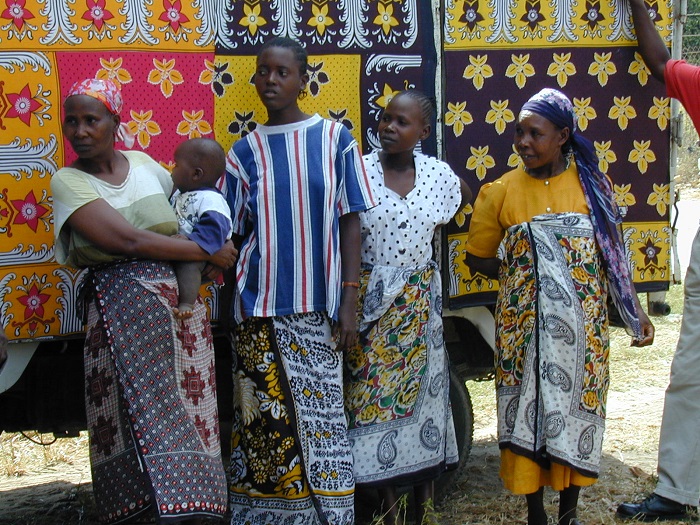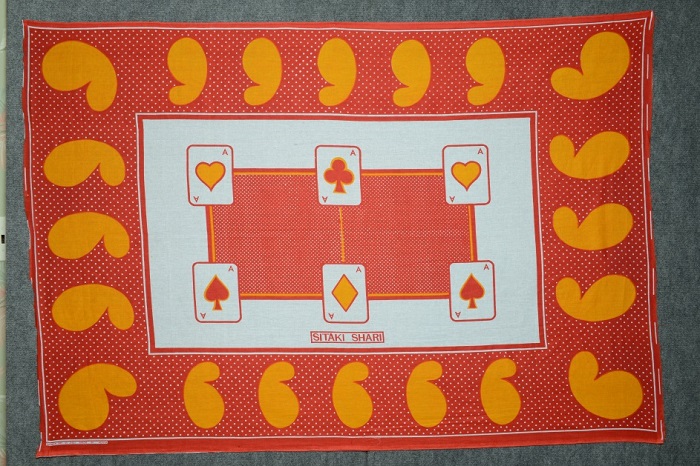A Cloth of Many Meanings: Khanga’s Role in Kenyan Culture

The khanga, a vibrantly colored East African cloth, was created on the island of Zanzibar in the mid-1880s. This printed cotton fabric, with its unique mix of colors, designs, and messages, is worn by many people across Sub-Saharan Africa but continues to have a special place in the cultural history of Kenya.
Khangas are often distinguished by a border along all four sides (pindo in Kiswahili), a central design (mji), and a written message (jina). They are usually sold in pairs and are popular for their many uses: as skirts, shawls, turbans, blankets, and even baby carriers. Although generally associated with women, khangas can be worn by men as well.
Traditionally, khangas are kept in a grandmother’s chest and folded carefully with a touch of perfume or incense. The garments are given as gifts to a young girl when she leaves home, to a bride at her wedding, and to a mother at the birth of a new baby. A collection of khangas may be passed from mother to daughter and is regarded as an inheritance.
Text was first added as part of the khanga’s design in the early 1900s and was originally printed in Arabic. Today, these Kiswahili “text messages” are an integral part of the cloth’s appeal. Khanga text speaks truth with poetic layers of cultural meaning, often using proverbs or religious messages to share an idea or make a point. Historical events, both local and global, can also be recorded on the khanga. During election seasons and other political engagements, khangas become important mobilizing tools, much like campaign T-shirts in the United States.
Bring your own khanga and story to the Kenya House during the Smithsonian Folklife Festival. To learn more, you can visit the National Museum of African Art for “Khanga Stories” on July 3 or join us for the “Early Text Messaging Through Khangas” discussions in the Kenya: Mambo Poa program. Khangas will also be for sale in the Marketplace! See the Festival schedule for details.

Phyllis Ressler is a professor of cultural anthropology and teaches at Webster University in Geneva, Switzerland. Her recent book, written with Lara Ressler Horst, is a compilation of research in Kenya, Europe, and Asia and is titled Kanga Stories.

